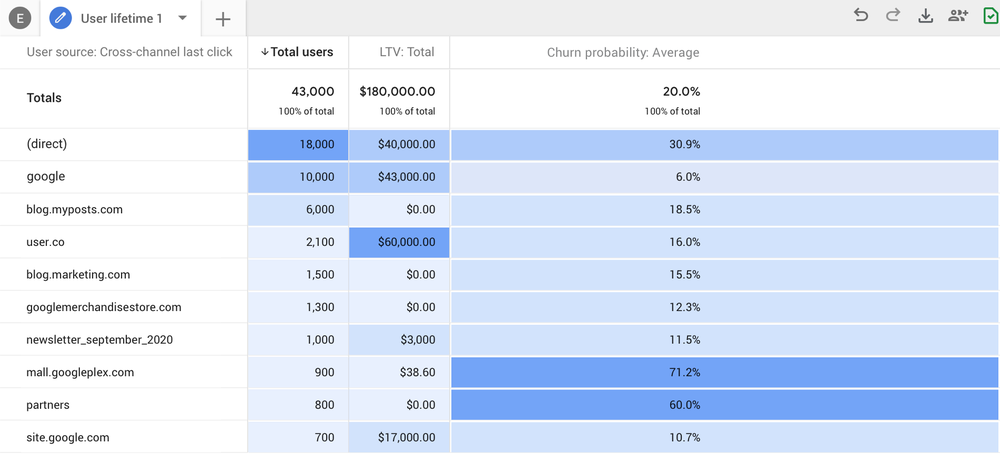Google Analytics upgrades with 4 new features
An overview of the new Google Analytics.
Google Analytics has just been upgraded with four new important features designed to make life easier for the average marketer.
In a post on their official blog, Google outlined the four new features as follows:
- Smarter insights using machine learning
- More integration with Google Ads.
- Customer-centric data measurement.
- More granular data controls.
For anyone that has tried to track the success of their campaigns in Google Ads, they will know that getting a complete picture of the data is more than difficult.
Google's updates are designed to address some of these shortcomings by providing marketers with more relevant data to improve ROI
As Google puts it: “To help you get better ROI from your marketing for the long term, we’re creating a new, more intelligent Google Analytics that builds on the foundation of the App + Web property we introduced in beta last year. It has machine learning at its core to automatically surface helpful insights and gives you a complete understanding of your customers across devices and platforms.”
In this blog post, we are going to cover the four updates that have been made to Google Analytics and how you can take advantage of them.
1. Smarter Insights
The new Google Analytics will now be alerting users to any important trends in their data. Google says they will do this by utilizing existing machine learning models Google uses elsewhere.
"By applying Google’s advanced machine learning models, the new Analytics can automatically alert you to significant trends in your data - like products seeing rising demand because of new customer needs," Google writes in their blog post.
In particular, the new Google Analytics will include a metric calculating churn probability, which will help businesses better plan their investments with the goal of retaining customers.

Another example Google cites is using website data to identify products that are rising in demand due to new customer needs.
Marketers will also be able to create custom audiences to more easily reach target customers. Eventually, the new Google Analytics is expected to give marketers an estimate of potential revenue they can get from a defined group of customers.
2. Deeper Google Ads Integration
Another improvement in the new Google Analytics is a tighter relationship with Google Ads and data sharing between the two.
Marketers will be able to create audiences that can reach potential customers more easily. Google Analytics will do this by measuring interactions across the web and apps and then report on those conversions.
Such interactions could include engaged views on YouTube on the web or in the app, as well as from Google and non-Google paid channels, Google Search, social media and gmail.
As Google puts it: "A deeper integration with Google Ads, for example, lets you create audiences that can reach your customers with more relevant, helpful experiences, wherever they choose to engage with your business."

3. Customer-Centric Data
When Google Analytics first began, the focus was on platforms, devices and locations. While these metrics are undoubtedly useful, the rise of audience marketing means customer-centric data is more important.
"The new analytics uses multiple identity spaces, including marketer-provided User IDs and unique Google signals from users opted into ads personalization, to give you a more complete view of how your customers interact with your business."
As an example, marketers can now see where customers first discovered their business, whether it was from an ad on the web, which later caused them to install your app and then finally make a purchase.
With the new Google Analytics, marketers will be able to see which channels are driving new customers in the user acquisition report, then use the engagement and retention reports to understand the actions these customers take, and whether they stick around, after converting.
4. New Data Controls
Finally, Google Analytics will now offer more granular data controls that marketers can use to manage how data is collected and retained.
Specifically, these controls can be used to determine the data collected will be used for advertising.
Customer data can be used to optimize ads, or it can be limited to measurement only. The ability to limit the data collected from customers is prep for a future where third-party cookies may be banned.
How to use the new Google Analytics
Google created a specific guide for how to use the new analytics which can view here.
Namely, Google recommends that because the old version of GA will be phased out, marketers should create a new 'Google Analytics 4' property, which was previously known as App + We property. This should be done alongside existing properties.
Try Aori
Want to combine the new Google Analytics with a powerful SEM Tool to create top-converting Google Ads campaigns? Try out Aori's Single Keyword Ad Group builder for free and see how we can help you reach your marketing goals.
